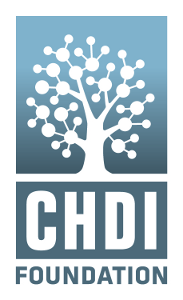
Huntington's disease (HD), also known as Huntington's chorea, is an incurable neurodegenerative disease that is mostly inherited. The earliest symptoms are often subtle problems with mood or mental/psychiatric abilities. A general lack of coordination and an unsteady gait often follow. It is also a basal ganglia disease causing a hyperkinetic movement disorder known as chorea. As the disease advances, uncoordinated, involuntary body movements of chorea become more apparent. Physical abilities gradually worsen until coordinated movement becomes difficult and the person is unable to talk. Mental abilities generally decline into dementia, depression, apathy, and impulsivity at times. The specific symptoms vary somewhat between people. Symptoms usually begin between 30 and 50 years of age, and can start at any age but are usually seen around the age of 40. The disease may develop earlier in each successive generation. About eight percent of cases start before the age of 20 years, and are known as juvenile HD, which typically present with the slow movement symptoms of Parkinson's disease rather than those of chorea.

Arvid Carlsson was a Swedish neuropharmacologist who is best known for his work with the neurotransmitter dopamine and its effects in Parkinson's disease. For his work on dopamine, Carlsson was awarded the Nobel Prize in Physiology or Medicine in 2000, together with Eric Kandel and Paul Greengard.
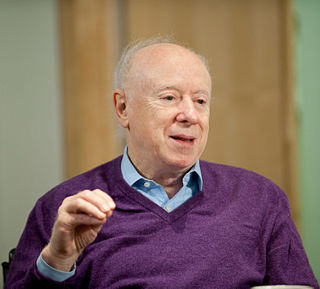
Joseph Leonard Goldstein ForMemRS is an American biochemist. He received the Nobel Prize in Physiology or Medicine in 1985, along with fellow University of Texas Southwestern researcher, Michael Brown, for their studies regarding cholesterol. They discovered that human cells have low-density lipoprotein (LDL) receptors that remove cholesterol from the blood and that when LDL receptors are not present in sufficient numbers, individuals develop hypercholesterolemia and become at risk for cholesterol related diseases, notably coronary heart disease. Their studies led to the development of statin drugs.
In genetics, trinucleotide repeat disorders, a subset of microsatellite expansion diseases, are a set of over 30 genetic disorders caused by trinucleotide repeat expansion, a kind of mutation in which repeats of three nucleotides increase in copy numbers until they cross a threshold above which they cause developmental, neurological or neuromuscular disorders. Depending on its location, the unstable trinucleotide repeat may cause defects in a protein encoded by a gene; change the regulation of gene expression; produce a toxic RNA, or lead to production of a toxic protein. In general, the larger the expansion the faster the onset of disease, and the more severe the disease becomes.

Sonidosaurus is a genus of sauropod dinosaur from the Late Cretaceous. It was a titanosaur which lived in what is now Inner Mongolia. The type species, Sonidosaurus saihangaobiensis, was described by Xu, Zhang, Tan, Zhao, and Tan in 2006. It was a small titanosaur, about 9 meters (30 ft) long. It was first discovered in the Saihangaobi, Iren Dabasu (Erlian) Formation, in 2001 in a quarry which would later yield the remains of Gigantoraptor.
Mark Bender Gerstein is an American scientist working in bioinformatics and Data Science. As of 2009, he is co-director of the Yale Computational Biology and Bioinformatics program.
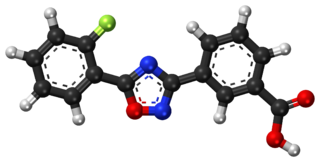
Ataluren, sold under the brand name Translarna, is a medication for the treatment of Duchenne muscular dystrophy. It was designed by PTC Therapeutics.

Nancy Wexler FRCP is an American geneticist and the Higgins Professor of Neuropsychology in the Departments of Neurology and Psychiatry of the Columbia University College of Physicians and Surgeons, best known for her involvement in the discovery of the location of the gene that causes Huntington's disease. She earned a Ph.D. in clinical psychology but instead chose to work in the field of genetics.

Gladstone Institutes is an independent, non-profit biomedical research organization whose focus is to better understand, prevent, treat and cure cardiovascular, viral and neurological conditions such as heart failure, HIV/AIDS and Alzheimer's disease. Its researchers study these diseases using techniques of basic and translational science. Another focus at Gladstone is building on the development of induced pluripotent stem cell technology by one of its investigators, 2012 Nobel Laureate Shinya Yamanaka, to improve drug discovery, personalized medicine and tissue regeneration.
The Hereditary Disease Foundation (HDF) aims to cure genetic disorders, notably Huntington's disease, by supporting basic biomedical research.
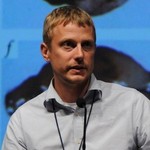
Jeffrey Bryan Carroll is an American scientific researcher in the field of Huntington's disease (HD). As a carrier of the abnormal gene that causes HD, he is also a public advocate for families affected by the disease, and co-founder of the HD research news platform HDBuzz. His life and work were the subject of a 2011 Gemini award-nominated CBC documentary feature. Carroll is an Associate Professor of neuroscience in the Department of Biology at the University of Washington
Sage Bionetworks is a nonprofit organization in Seattle that promotes open science and patient engagement in the research process. It is led by Luca Foschini. It was co-founded by Stephen Friend and Eric Schadt.
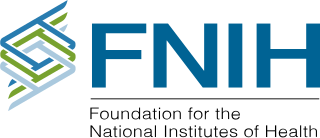
The Foundation for the National Institutes of Health (FNIH) is a not-for-profit, 501(c)(3) charitable organization established by the US Congress in 1990. Located in North Bethesda, MD, the FNIH raises private-sector funds, and creates and manages alliances with public and private institutions in support of the mission of the National Institutes of Health (NIH).
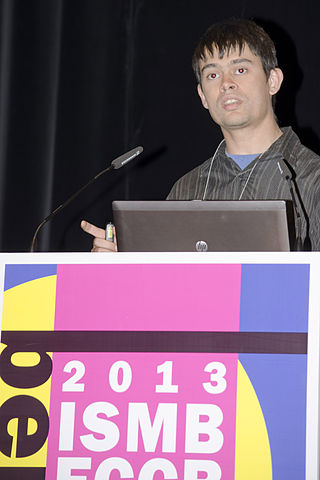
Gonçalo Rocha Abecasis is a Portuguese American biomedical researcher at the University of Michigan, serves as Vice President & Chief Genomics and Data Science Officer at the Regeneron Genetics Center, and was chair of the Department of Biostatistics in the School of Public Health. He leads a group at the Center for Statistical Genetics in the Department of Biostatistics, where he is also the Felix E. Moore Collegiate Professor of Biostatistics and director of the Michigan Genomic Initiative. His group develops statistical tools to analyze the genetics of human disease.

The Bronowski Institute of Behavioural Neuroscience is an Australian independent not-for-profit medical research institute that is financially supported entirely by philanthropy, that undertakes clinical and basic research into disorders of brain function and addresses problems of altered biological function in animals and man.

Wendy Anne Bickmore is a British genome biologist known for her research on the organisation of genomic material in cells.

The New York Genome Center (NYGC) is an independent 501(c)(3) nonprofit academic research institution in New York, New York. It serves as a multi-institutional collaborative hub focused on the advancement of genomic science and its application to drive novel biomedical discoveries. NYGC's areas of focus include the development of computational and experimental genomic methods and disease-focused research to better understand the genetic basis of cancer, neurodegenerative disease, and neuropsychiatric disease. In 2020, the NYGC also has directed its expertise to COVID-19 genomics research.
Herbert W. "Skip" Virgin was the Edward Mallinckrodt Professor and Chair of the Department of Pathology & Immunology at the Washington University School of Medicine and a member of the National Academy of Sciences. He is best known for establishing murine norovirus as a model system for studying norovirus biology, for identifying host phenotypes associated with persistent viral infections, for defining alterations to the human virome in the context of different diseases, and for elucidating the roles of autophagy and interferon-stimulated genes during viral infection.
John Maraganore is an American scientist, entrepreneur, and life sciences industry leader.

Edward Wild, also known as Ed Wild, is a British neurologist and neuroscientist in the field of Huntington's disease and an advocate for scientific outreach to the public. He co-founded the Huntington's research news platform HDBuzz in 2010. He is a professor of neurology at UCL Institute of Neurology and is an associate director of the UCL Huntington's Disease Centre. He is also a consultant neurologist at the National Hospital for Neurology and Neurosurgery in London.
